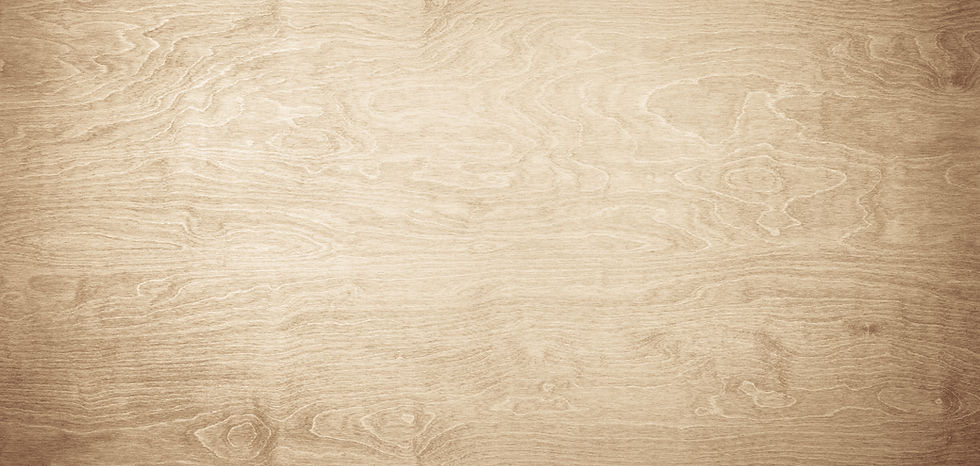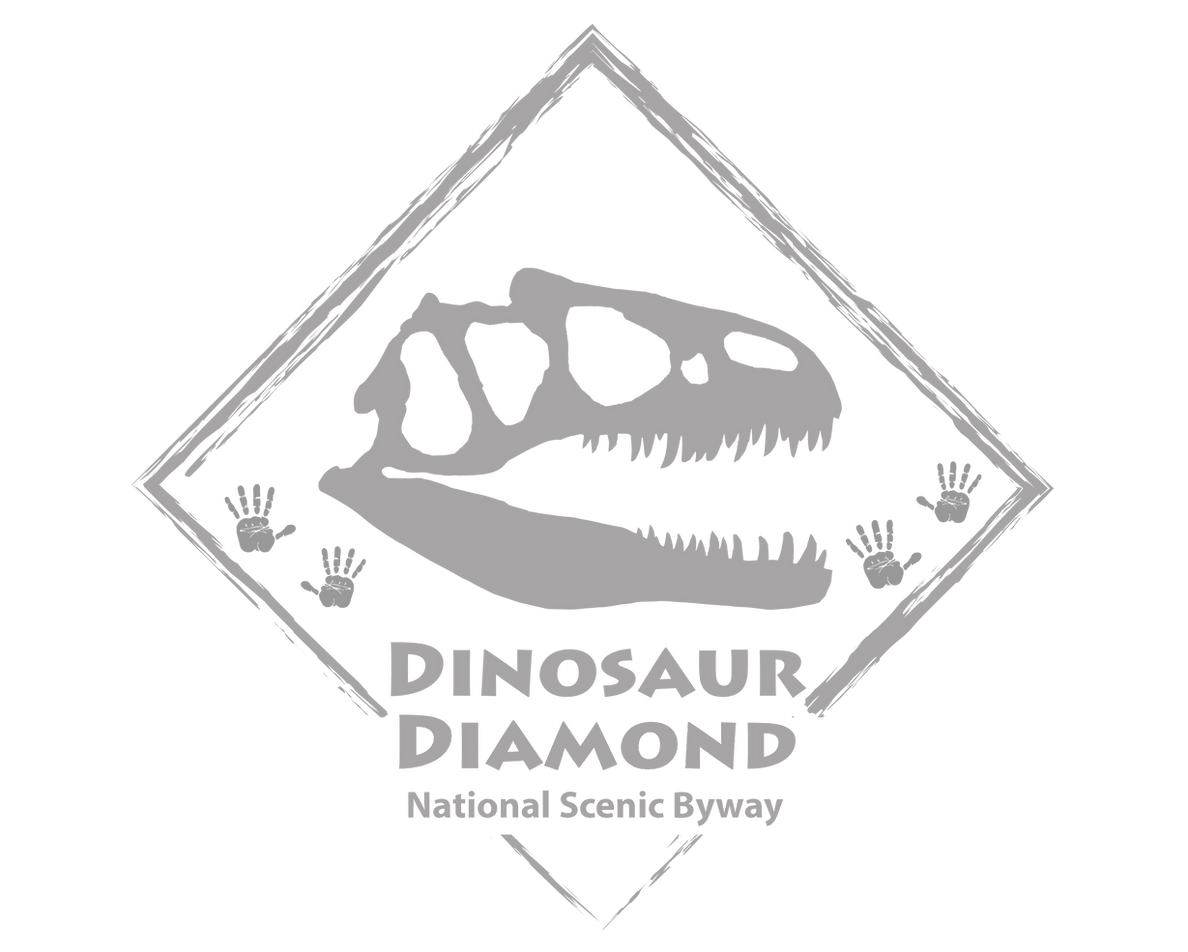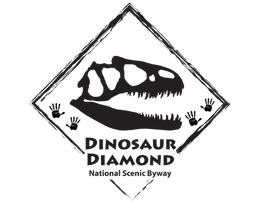

MONUMENTS & MESAS
Dry Mesa Quarry
This quarry on National Forest Service land southwest of Delta, Colorado, is the site of several paleontology “firsts,” including the first Torvosaurus (one of the largest meat-eaters, much larger than Allosaur, who was a pretty big guy himself), the first Supersaurus (a 120foot long diplodocid sauropod dinosaur), “Ultrasauros,” and many Morrison Formation dinosaurs such as Stegosaurus, Diplodocus, Apatosaurus, Allosaurus, and Ceratosaurus. Contact Grand Mesa, Uncompahgre and Gunnison National Forests at 970-874-6600 for information.
Gateway, Colorado
This tiny ranching and mining town is in an incredible setting on the Dolores River, nestled under towering red sandstone rock formations. Now it’s also the home of Gateway Canyons Resort featuring spring and summer kayaking and canoeing on the Dolores, lodging, restaurants, and the Gateway Colorado Auto Museum, where 40 classic vehicles tell 100-plus years of the automobile history. It’s automobile as art. South from Grand Junction on Hwy. 50; outside Whitewater take Hwy. 141(Unaweep-Tabeguache Scenic and Historic Byway), to Gateway. Gateway Canyon Resort: 970-931-2458
Tabeguache Trail
Enjoyed by locals and visitors, this trail is famed for its single track, slick rock mountain biking, and hiking. A parking area and the trailhead is on Monument Road which leads to the east entrance of Colorado National Monument.
Dominguez Canyon
In 1776, a band of Spanish priests and soldiers led by Fathers Dominguez and Escalante left Santa Fe, New Mexico, to find a route to California. They traversed the Dolores River Canyon to the north fork of the Gunnison River. Today it’s the site of the Dominguez Canyon Wilderness Study Area, 75,000 acres of the rugged country managed by the BLM. Just 30 minutes south of Grand Junction on Highway 50, Dominguez Canyon contains rock art sites, waterfalls, and a herd of desert big horn sheep.
Bangs Canyon/Rough Canyon
Just eight miles southwest of Grand Junction, this recreational area offers trails for four-wheeling enthusiasts and hikers. A four-mile hike into rugged and remote Rough Canyon takes you through several ecosystem types. Managed by the BLM Grand Junction Field Office; 970-240-3000.
DINOSAURLAND
Steinaker Lake State Park Steinaker Lake
Four miles north of Vernal, is a 38,000 acre-foot reservoir which is an integral part of the Central Utah Project and a great cool-off spot offering boating, fishing, water skiing, and other splash related activities. Dino buffs will want to check out the Morrison Formation outcrops running parallel to the highway where dinosaurs and gastroliths (dino gizzard stones) are found.
Open year ‘round. 4335 North Highway 191, Vernal. Entrance and camping fees. 435-789-4432; http://stateparks.utah.gov/ parks/steinaker/
Red Fleet Dinosaur Trackway
Six miles beyond Steinaker Lake is the turnoff to Red Fleet State Park. This man-made lake is named for the large red outcrops of Navajo Sandstone surrounding it. Great place to picnic, camp, swim, fish, boat. Check out the recently discovered dinosaur trackway dating back 200 million years – a moderately difficult 2.4-mile round-trip hike. 17 miles north of Vernal is the Windy Point Overlook, which offers a grand panoramic view of the Ashley Valley below. Open year ‘round. 8750 North Hwy. 191 Vernal. Entrance and camping fees. (435) 789-4432; http://www.utah.com/ stateparks/red-fleet.htm
Flaming Gorge National Recreation Area
Red Canyon Overlook Flaming Gorge NRA is 91 miles of steep canyons and valleys along the Green River. You’ve got to see the view from Red Canyon Visitor Center about 30 miles north of Vernal on the Flaming Gorge National Scenic Byway. Sheer cliffs drop 1,300 feet to the lake. There’s a fully accessible nature trail, rock art, artifacts. The visitor center has books, maps, and exhibits on local natural and cultural history as well as books and maps for sale. Open Memorial Day weekend through mid-September. 435784-3445; http://www.utah.com/nationalsites/flaming_gorge. htm
Bonanza Leaf Site
The 40 million-year-old Green River Formation is too young to contain dinosaur fossils but it does have hidden in its shale layers many finely preserved leaf fossils. A site a few miles east of Bonanza, UT on the way to Cowboy Canyon, has been delighting collectors for decades now. Carbonized leaves from oak, sycamore, and willow are some of the more common specimens found. Fossilized insects are also commonly found there and are so well preserved that sometimes they are confused with the ones swarming around your head in the late spring and early summer. Screwdriver and hammer are the minimum tools necessary but a flat-nosed shovel, a masonry chisel, and a pry bar come in handy also.
Uinta Mountains
Made of rocks too old to hold dinosaur fossils, the Uinta Mountains are too tempting to ignore on this northern leg of the Diamond. There are hundreds of alpine lakes to fish for trout, grayling, and char. Many are surrounded by conifer forest but the head of each of the major drainages holds at least a couple of tarn lakes set in stone at the heads of the glaciated canyons. Rock Creek, Swift Creek, and the Whiterocks River are just a few of the many streams funneling water off this longest of east-west trending mountain ranges in the continental U.S. King’s Peak, the highest point in Utah, is set in the middle of a wilderness area preserving the core of this wonderful mountain range. In addition to hiking, camping, fishing, and hunting; spelunking is another recreational activity available to visitors to the Uintas. Big and Little Brush Creek Caves, Whiterocks Cave, and Icy Peak Cave each have their own individual character. The U.S. Forest Service has ranger stations located in Vernal, Roosevelt, and Duchesne with maps, brochures, and helpful personnel to aid the visitor in exploring this magnificent mountain range.
CASTLE COUNTRY
Nine-Mile Canyon
Called “the longest art gallery in North America,” NineMile Canyon is a 70-mile long journey through historic and prehistoric central Utah. The artwork, structures, and artifacts span 8,000 years. Much of the rock art is the work of the Fremont Culture, a nomadic group of hunter-gatherers who roamed the area till about 900 years ago. Allow a full day. Be prepared for bumpy, dusty roads, no services. Take plenty of drinking water. 10 miles southeast of Price at Wellington; left on 2200 East (Soldier Canyon Road); 13 miles of pavement, then graded dirt road. Brochure and map available from the Castle Country Regional Information Center in the Prehistoric Museum office, call 800-817-9949 or visit www.ninemilecanyoncoalition.org.
Goblin Valley State Park
This landscape is so bizarre it’s appeared in several science fiction movies (remember “Galaxy Quest”?) standing in for a barren planet. The park includes several hundred acres of Entrada sandstone wildly eroded into hoodoos, pinnacles, mushrooms and other goblin-like shapes guaranteed to make you laugh. These could be your favorite photos of your trip! The 1.5 mile Carmel Canyon Trail loop begins at the parking lot and wanders into the heart of the “goblins.” The 1.5 mile, one-way Curtis Bench Trail overlooks the Henry Mountains. The entrance road is also a jumping-off point for exploring the San Rafael Swell. Open year ‘round. Highway 24, 24 miles south of I-70. Entrance and camping fees. 435-564-3633; http://stateparks.utah.gov/parks/goblin-valley/
THE CANYOLANDS
Arches National Park
No other place in the world has as many natural sandstone arches as the nearly 77,000 acres of red rock terrain of Arches National Park. Erosion of the Entrada Sandstone has produced literally hundreds of windows, holes, and other fantastic shapes in the sandstone fins and cliffs. An 18-mile paved scenic drive takes you to many of the park’s primary features, and hiking trails take you to more. A new visitor center near the park entrance offers an impressive array of interpretive materials and exhibits. The park can be crowded during the summer and fall. Park open year ‘round; visitor center hours vary with season. Entrance on Hwy 191 five miles north of Moab. 435 719-2299; www.nps.gov/arch
Canyonlands National Park
Island in the Sky District Canyonlands National Park covers 527 square miles of Colorado Plateau landscape in three distinct districts. The remote Maze District encompasses parklands west of the Colorado and Green rivers. The Needles District (covered in section four) lies east of the rivers. The lofty section rising between the two rivers is Island in the Sky and is the most accessible from Moab.
At over 6,000 feet above sea level, the Island provides breathtaking, panoramic views of the vast canyon country. Guaranteed, you’ll stand and stare and not believe your eyes. You can see at least three mountain ranges and thousands of square miles of mysterious canyons, hidden gorges, and shadowy valleys. Drives, hikes, overlooks, camping -- the park’s website suggests the best activities based on the length of your stay. Park open year ‘round; visitor center hours vary with season. Ten miles north of Moab on Hwy 191, turn at Hwy 313. 435-259-4351; http://www.nps.gov/cany
Dead Horse Point State Park
This is Utah’s premier state park. Dead Horse Point is a stone promontory 2,000 feet above the Colorado River winding its way from the Continental Divide in Colorado to the Gulf of Mexico. You can’t see the entire 1,400-mile route from up here – you’ll just think you can. Before the turn of the century, cowboys drove wild mustangs to the promontory which served as a natural corral where horses were roped and broken. Hwy 313 18 miles off Hwy 191. Visitor center, interpretive museum, and campground hours differ with season.435-259-2614; www.discovermoab.com/stateparks.htm
Moab to Monument Valley Film Commission Museum
Dubbed “100 Years of Cowboy History,” this museum at the Red Cliffs Lodge houses memorabilia from early and recent films and over 100 television commercials shot in the Moab area. If you’re a film aficionado, the surrounding landscape will look familiar. John Ford films “Rio Grande” and “Wagon Master” were made here, as were the more recent “Geronimo,” “City Slickers,” and “Thelma and Louise.” The self-guided museum opens daily. No charge. Mile Post 14, Hwy. 128. 866-812-2002; www.redcliffslodge.com
Professor Valley
Beyond the museum Hwy. 128 heads into the Professor Valley with views of formations Castle Rock, Priest, and Nuns, and the La Sal Mountains. This amazing road gives you access to numerous campgrounds, several lodges, and intriguing side trips to places like Onion Creek, Fisher Towers, and Negro Bill Canyon. If you have the time, you may want to take the La Sal Mountain Loop, beginning in Castle Valley and winding upward to nearly 10,000 feet above sea level before heading back south of Moab.
